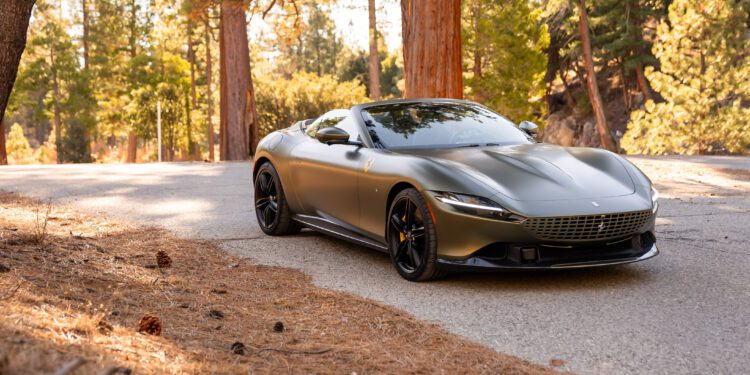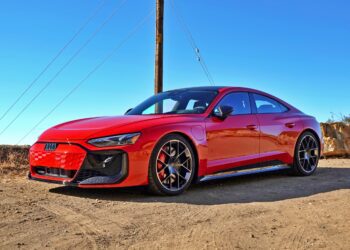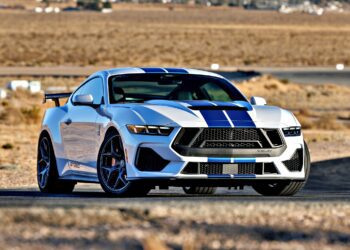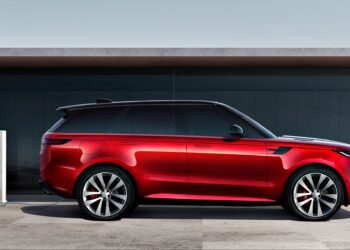California’s ties to Maranello go way back. The Western state’s influence over the automotive enthusiast, with its perfect climate along its coast, vast top-speed-friendly deserts, and dense forests dissected by world-class winding roads, can be traced further still. In the 1950s, however, the craze for open-top sports cars in the Golden State prompted famed Ferrari importer and racer John von Neumann to make a request.
Von Neumann wanted an open-top car for road and track explicitly built to serve the American buyer. Across the US in New York, Ferrari importer Luigi Chinetti echoed this appeal, citing strong demand for the type. Enzo Ferrari was initially hesitant to build it, pointing to the existence of the 250 GT Cabriolet. However, as cataloged in Dennis Adler’s “Ferrari 70 Years”, von Neumann and Chinetti replied that the Cabriolet wasn’t the car their buyers wanted.
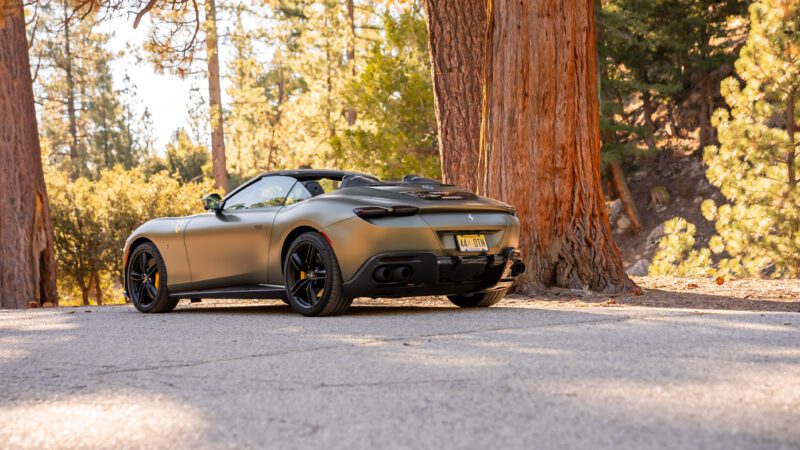
Their collective pull in Maranello was undeniably strong, thanks to steadily growing sales across the pond. As Adler tells it, this convinced Ferrari to “send Pininfarina back to the drawing board and his engineers to task on a revised chassis and suspension.” The result was the 250 GT Spyder
California, named after the home of its target audience. Designed by Pininfarina and built by Sergio Scaglietti, it sits atop the GT Berlinetta chassis and remains one of the most iconic and valuable Prancing Horses ever built.
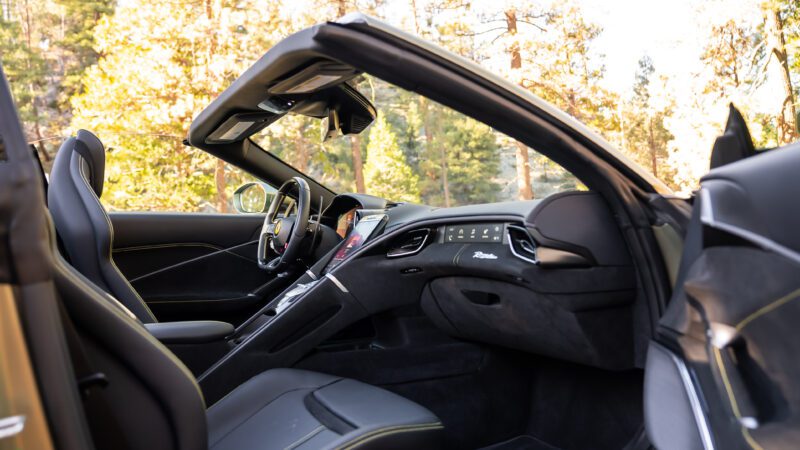
While the 365 California carried the name well into the 1960s, the Prancing Horse eventually shelved it, reviving it in 2008 with the introduction of the Ferrari California four decades later. The moniker disappeared again in 2017 as the model that wore it exited production. The Portofino followed shortly, its name chosen to conjure images of the Italian Riviera. It introduced significant structural and mechanical improvements, eventually doubling as the foundation upon which Ferrari built the gorgeous Roma Coupe.
It’s been nearly 60 years since von Neumann and Chinetti made their initial request, yet California’s influence in Maranello remains intact. I’m in the Ferrari Roma Spider, which, like its ancestors, remains front-engined and rear wheel drive. It’s an open-top sporty GT that effectively embodies the Californian spirit.
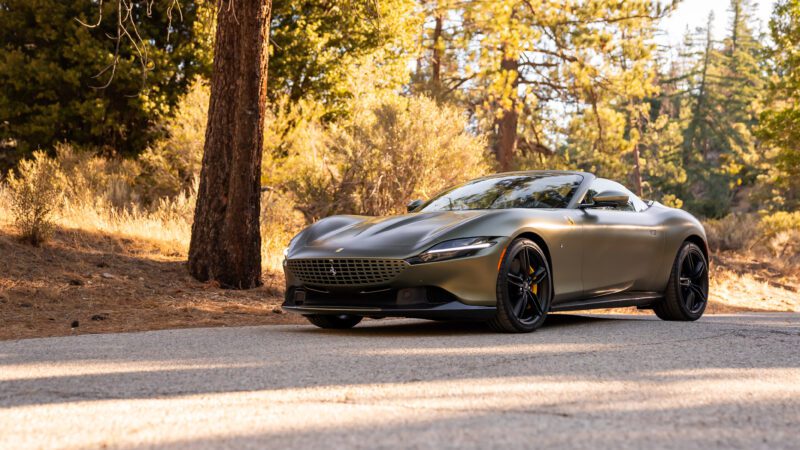
You’d be shocked at how little of an effect chopping the roof off a car can have on its personality. Take an Aston Martin DB12 or a Porsche 911 Turbo S, morph them into Volante and Cabriolet form, and the use case stays the same. Just stash some sunscreen in the glove box, and you’re good to go. This isn’t the case when it comes to the Roma Spider. Its transition from hard top to convertible completely changes how you drive it and, more importantly, where.
Take the Roma Coupe, marketed heavily by Ferrari after the spirit of La Dolce Vita. Its low, sloping roofline and 60s-inspired curves conjure images of pulling up to red-carpet premiers or extravagant parties hidden deep within the city. It captures the essence of the Bond effect that’s driven AM sales for decades. By owning one, you might inherit some of the traits of the brooding, mysterious character that would drive one on the big screen.
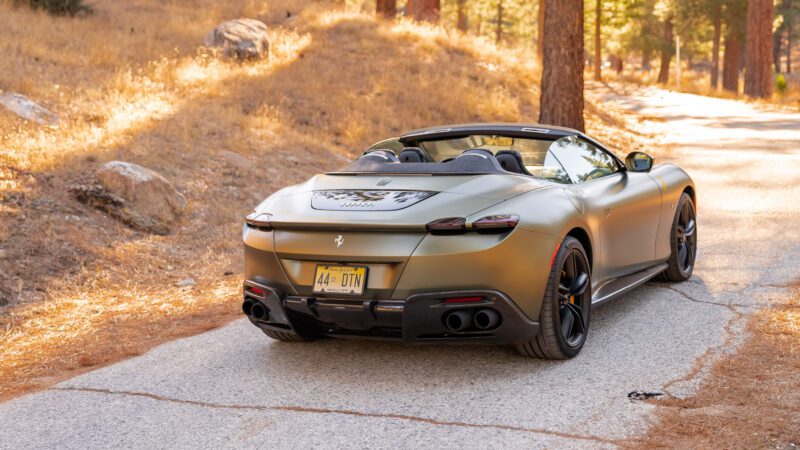
In contrast, although similarly positioned as La Nuova Dolce Vita, the Ferrari Roma Spider trades late-night escapades for sunny days on the West Coast. It’s mechanically identical to the Coupe, drawing power from the same 612-horsepower 3.9-liter twin-turbocharged V8. Still, it encourages a far more relaxed attitude behind the wheel. Where the Coupe is an athletic GT, encouraging you to dance up a canyon road with easily manageably slides, the Spider wants you to take things down a notch.
Its dry weight figure rises from 3,245 pounds for the Coupe to the 3,430-lb Spider. An extra 185 lb is not an inconsiderable sum, but it hardly matters in this car’s case. If performance is what you’re after, its 3.4-second sprint to 62 mph should still be plenty, as will its 199 mph top speed. This is still a front-engine rear-drive Ferrari, and its dual-clutch automatic moves through gears rapidly. You can even light the rears if you want.
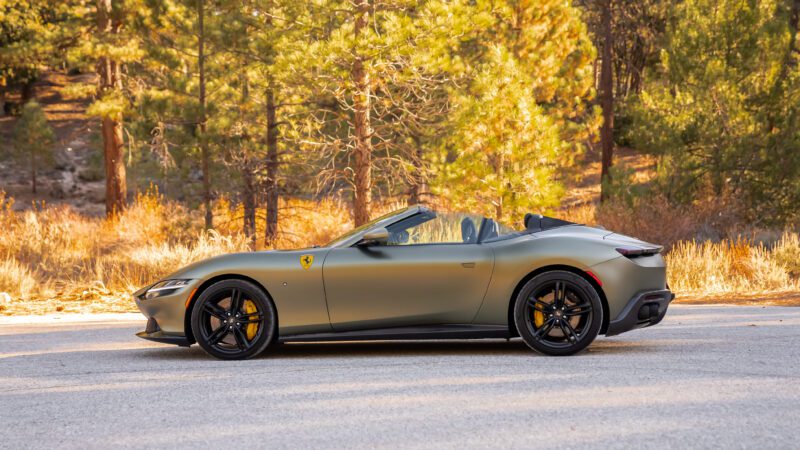
Instead, you’ll want to put the top down, engage the integrated automatic wind deflector, and enjoy its comfortable magnetic ride suspension on a cruise up the coast. As far as grand touring goes, it has the Coupe beat in terms of versatility.
Its roof stows in 13.5 seconds at up to 37 mph, bringing you closer to the note emanating from its quad exhaust tips. Its interior is the best of any current production Prancing Horse, sporting a separate central infotainment screen that significantly increases its usability. The cabin isolation is excellent despite, in my tester’s case, trading its predecessor’s metal folding roof for a denim one.
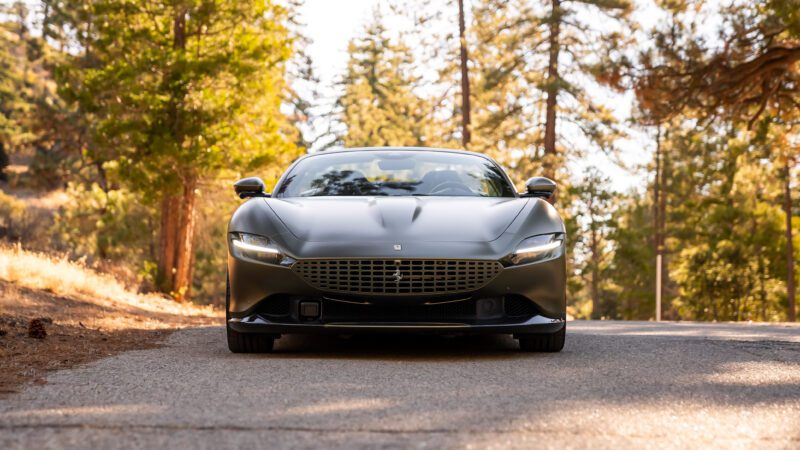
Ferrari went to great lengths to ensure that the rear headrests flow seamlessly into the redesigned rear deck, and its attention to detail pays dividends. The Roma Spider is gorgeous in its own right. However, this tester’s Verde Masoni Opaco exterior, black wheels, and massive fender shields lean more into sporty territory than an elegant cruiser. Still, the Spider retains the same sloping roofline that makes the Coupe a stunner.
This tester starts at $272,970 but, thanks to a hefty options list, reaches an as-tested price of $435,809.
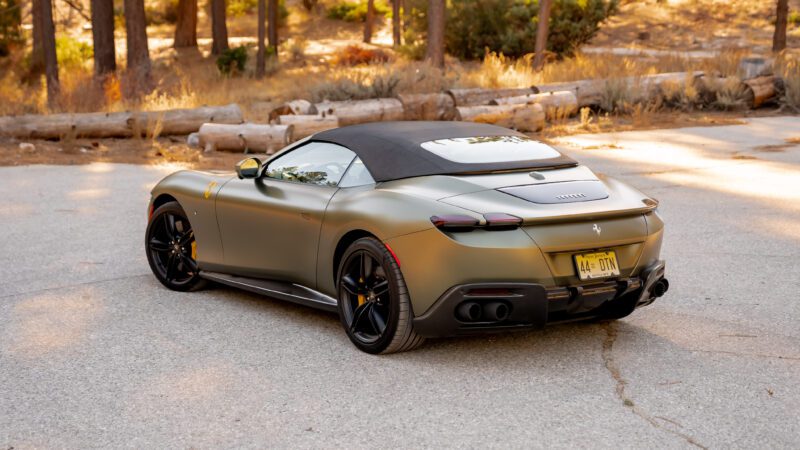
The Ferrari Roma Spider’s persona breaks away from the Coupe in welcomed ways. It’s still a gorgeous two-seater that makes fantastic V8 noises and is as quick as you’d want from a Prancing Horse. While its weight gains affect its handling, it doesn’t stop it from being an excellent grand tourer, the ideal car to enjoy the California sunshine. After all, while the state’s influence over the Prancing Horse may date back to the 60s, the Roma Spider is proof that it endures today.


